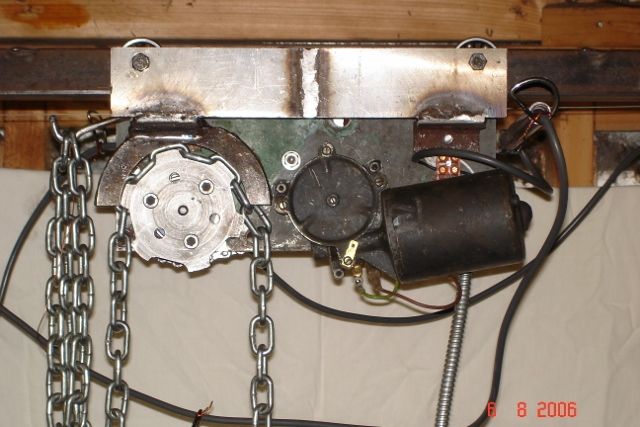My reconstructed spine restricts me to a max 5kg lift. Both chucks on the new lathe exceed that – in fact the 8” four jaw with back plate is far to heavy for me to lift safely at 15.5 kg.

An overhead hoist was out of the question as the timber ceiling/roof is not strong enough to support any sort of weight so I have constructed a hoist where the weight bears partly on the floor and partly against a bench with a small electric winch from ebay doing the lifting.

I used an old Victorian barn door hinge to help brace the scaffold pole against the direction of lift.

I pinched the braced jib idea from a commercially available design but as I already had suitable materials to hand I made my own.

On the first attempt I used a scaffold gate hinge clip as the main jib pivot but it did not work very well – everything was very wobbly even when the clip was supported from below with a second scaffold clip which is still there but now redundant.

So I replaced the gate hinge clip with a block I made from a lump of 70 x 50 MS secured to the scaffold pole with six 3/8” Whitworth UNBRAKO cap heads and that works very nicely.

Making the block offered a good chance to check out the lathes capabilities by boring the hole to suit the scaffold pole. This was done with the lathe in back gear set at the lowest speed and feed to prevent the lathe from jumping up and down with the off centre workpiece. After going through with a 20mm drill each roughing pass was done by applying a cut of 100” depth which opened the hole out by .200” each pass. It did not take long to get to size. I think it could have handled a deeper cut but I like to do machining by feel and in this case I felt comfortable. So the boring bit?………….
**LINK**
………..and up she goes!
Rik
**LINK**
vintagengineer.













